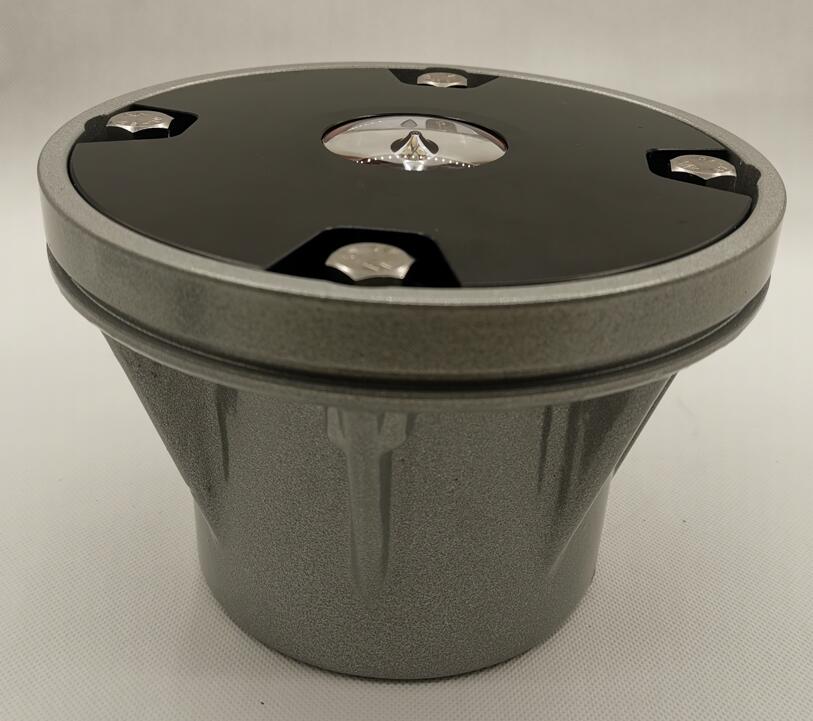A well-designed helipad light fixture plays a crucial role in aviation safety by providing clear visibility for pilots during landing and takeoff. Whether installed in hospital helipads, offshore platforms, or high-rise buildings, these fixtures must meet strict safety and performance standards. With advancements in technology, modern helipad light fixtures are becoming more efficient, durable, and adaptable to various environments.
Key Features of a Helipad Light Fixture
1. Durability and Weather Resistance
Helipad light fixtures are exposed to harsh environmental conditions, including heavy rain, strong winds, and extreme temperatures. High-quality materials such as corrosion-resistant aluminum and impact-resistant polycarbonate ensure longevity and reliability. Waterproof and dustproof designs (IP65 or higher) further enhance their performance in challenging settings.
2. Optimal Illumination and Visibility
To assist pilots in identifying landing zones, helipad light fixtures provide consistent brightness and color-coded signals. LED-based fixtures offer superior illumination with lower energy consumption compared to traditional halogen or incandescent lights. These fixtures emit uniform light patterns, reducing glare and improving night-time visibility.

3. Compliance with Aviation Standards
Regulatory organizations like the Federal Aviation Administration (FAA) and the International Civil Aviation Organization (ICAO) set stringent guidelines for helipad lighting. Compliance ensures that helipad light fixtures meet safety requirements, including proper color, intensity, and positioning to avoid pilot confusion and landing errors.
4. Energy Efficiency and Sustainability
Modern helipad light fixtures integrate energy-efficient solutions, such as LED technology and solar power. Solar-powered fixtures are particularly useful for remote locations, reducing the dependency on external power sources. Low-energy consumption not only cuts operational costs but also supports sustainability initiatives.
| helipad light fixtures |
| helipad light fixture |
Types of Helipad Light Fixtures
1. Perimeter Lights
Perimeter lights outline the helipad’s boundary, ensuring pilots can easily locate the landing zone. These fixtures are typically green or white and spaced evenly around the helipad for optimal visibility.
2. Floodlights
Floodlights provide broad-area illumination, enhancing the visibility of the landing pad and its surroundings. They are strategically positioned to avoid glare while maximizing surface clarity.
3. Wind Indicator Lights
Wind direction is a critical factor for helicopter landings. Illuminated wind socks or wind indicator lights provide real-time wind direction data, assisting pilots in making informed approach decisions.
4. Obstruction Lights
To prevent collisions, obstruction lights mark tall structures or obstacles near the helipad. These fixtures emit steady or flashing red lights to warn approaching aircraft of potential hazards.
5. Touchdown and Lift-Off (TLOF) Lights
TLOF lights enhance the visibility of the designated landing area. These fixtures are embedded into the landing surface or positioned around the pad to ensure precision in landing and takeoff operations.
Challenges in Helipad Light Fixture Design
1. Harsh Environmental Conditions
Helipad light fixtures must endure extreme weather conditions without compromising performance. Advanced sealing techniques and robust materials help mitigate the effects of moisture, corrosion, and debris accumulation.
2. Power Supply Reliability
In remote or emergency settings, uninterrupted power is essential. Battery backup systems, solar integration, and energy-efficient designs ensure continuous operation even in power outages.
3. Maintenance and Longevity
Minimizing maintenance costs while ensuring long-term reliability is a challenge in helipad lighting. LED fixtures with extended lifespans and modular components simplify replacements and reduce operational disruptions.
Future Innovations in Helipad Light Fixtures
1. Smart Lighting Systems
Advanced helipad light fixtures incorporate smart sensors that adjust brightness based on ambient lighting conditions. Automated control systems enable remote monitoring, reducing manual interventions and optimizing energy consumption.
2. Wireless and Solar-Powered Solutions
Wireless helipad light fixtures eliminate the need for extensive cabling, making installations quicker and more adaptable. Solar-powered systems further enhance energy efficiency, making them ideal for off-grid locations.
3. Integration with Navigation Systems
Future developments in helipad lighting involve integration with GPS-based navigation and automated aircraft guidance systems. These enhancements improve pilot awareness and reduce landing risks in low-visibility conditions.
A well-designed helipad light fixture is an indispensable component of aviation safety. With durability, efficiency, and compliance with international standards, these fixtures ensure secure landings in diverse environments. As technology advances, innovations such as smart lighting, solar power, and automation will continue to enhance the reliability and sustainability of helipad lighting systems, making air operations safer and more efficient.